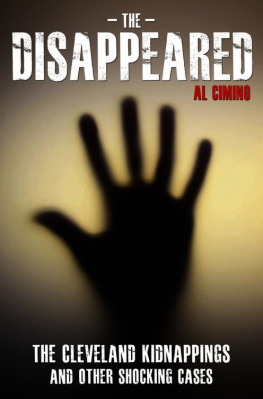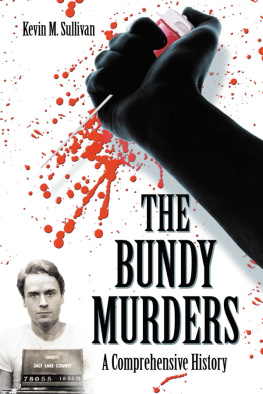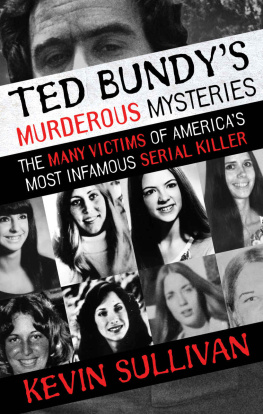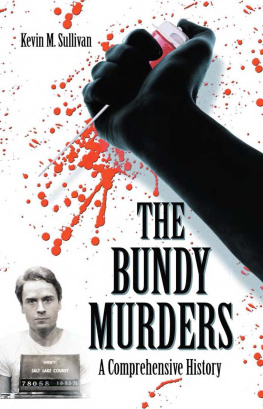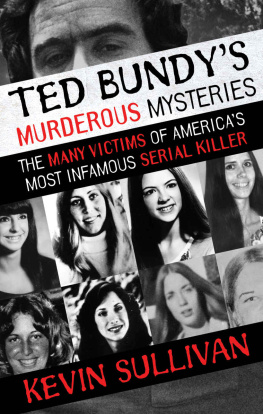Introduction
All-American Boy
Ted Bundy was a prolific rapist and murderer who assaulted and killed as many as 36 women and girls. His acts were horrifically degenerate and depraved. But his family and friends had no inkling of what he was up to. His lovers were unaware or when they did harbour suspicions they were easily persuaded to put them out of mind. On the face of it, Bundy did not look like anyones idea of a killer.
When he finally went on trial for the murder of two college students in Florida and the brutal assault of three others, The New York Times said: The stereotype of mass killers with minds bedeviled by tumors or hallucinations is all too familiar to the American republic. They were the drifters, the malcontents, the failures and the resenters. Ted Bundy, for all appearances, no way resembles any of them. He had all the personal resources that are prized in America, that guarantee success and respect. He loved children, read poetry, showed courage by chasing down and capturing a purse-snatcher on the streets of Seattle, rescued a child from drowning, loved the outdoors, respected his parents, was a college honors student, worked with desperate people at a crisis center and, in the words of one admirer, Ted could be with any woman he wanted he was so magnetic! He wanted to become an attorney or a politician, to do something with his life to help others.
By then Bundy had already been convicted of aggravated kidnapping in Utah, yet The New York Times headline read: All-American boy on trial. He was charming, handsome and charismatic. No one believed that he could have done it.
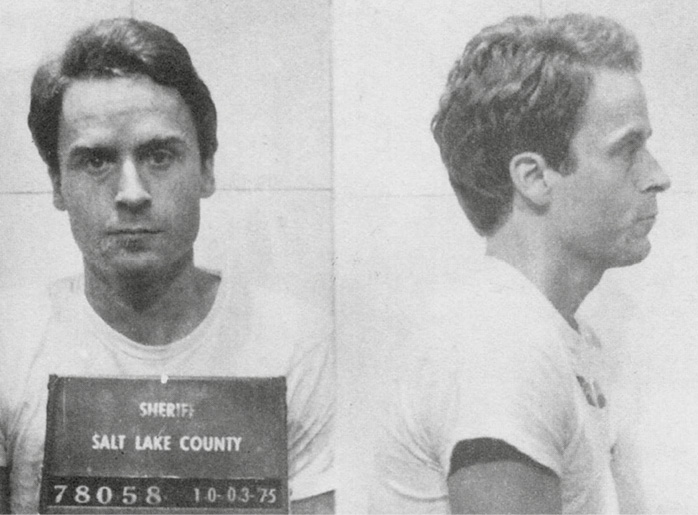
Ted Bundy looked like he had it all he seemed like the perfect All-American boy but appearances can be deceptive.
For Gods sake, said a man who knew the young Ted Bundy before his first criminal charges, he was so well thought of that he was the assistant director of the Seattle Crime Prevention Advisory Commission the same year all the killings started. In that office, Bundy even wrote a rape prevention pamphlet. Meanwhile, he was a Republican campaigner staffer and a rising star in the GOP.
Almost to the end, there were a lot of people who believed that Bundy himself was the victim a bright young man tangled in a monstrous web of circumstance by a jealous girlfriend and persecuted by conniving police investigators, ambitious prosecutors and lazy journalists, who were happy to pile one charge on top of another, making the case bigger and more sensational. However, in his final days, when Bundy eventually faced the electric chair after years on Death Row, he confessed to a litany of unspeakable crimes. His wife, who had married him when he was already under sentence of death and had stuck by him through thick and thin, was shocked and distraught, and disappeared with their child.
Although Bundy had been on the list of suspects for murders in Washington State, Idaho, Utah, Colorado and Florida, the police could not catch him and doctors did not diagnose his psychopathic condition until it was way too late. Even then they were hard put to explain why he had committed his appalling crimes.
As a child he was shy, but not unusually so. His first girlfriend found him immature, but sensed nothing of the violent sexual fantasies that were already gripping him. Seven years later, she met a now grown-up Ted Bundy and tried to rekindle their relationship, unaware that he was already a practised peeping tom and stalker.
Odd coincidences led his long-term girlfriend Liz Kendall to have her suspicions, but she castigated herself for talking to the police, fearing she might ruin his political career. The police, in turn, dismissed her misgivings, seeing Bundy as a blameless law student with no criminal record not the sort of man who raped, sodomized and murdered. Liz found it hard to believe that a man who was accused of having just sated his perverted lust with brutal murder could be sitting across the dinner table from her, talking like a normal human being. She finally split from him, but still called her book about their time together The Phantom Prince, betraying more than a little affection for the demented serial killer.
A co-worker at a counselling centre where Bundy worked was a former police officer and crime writer. She even accepted a commission to write a book about the killings that were gripping Washington State in 1974, without realizing that the man who had occupied the adjacent desk was responsible. Even when the truth came out, she found it hard to credit.
Carole Ann Boone, the woman who became his wife, dismissed his multiple convictions until, she said, she saw irrefutable physical evidence. Even that was not good enough. When the authorities forbade their marriage she found a way to do it anyway and give him a child while he was on Death Row.
Then there were the groupies who turned up at Bundys trial. They wrote to him begging for his love.
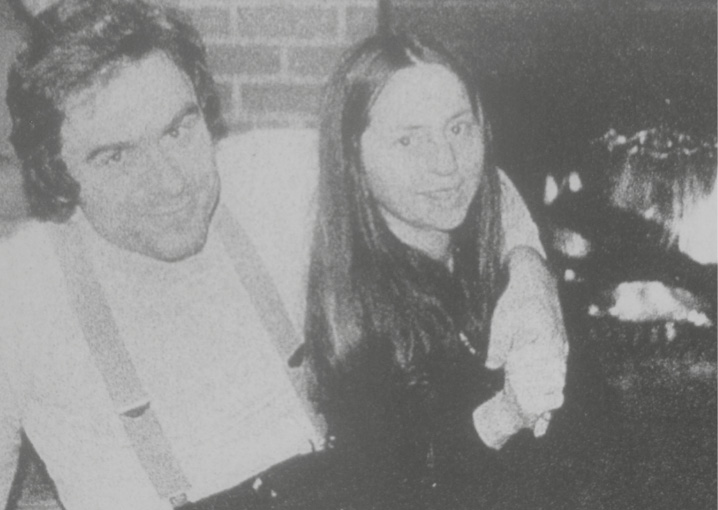
Liz Kendall in the embrace of her long-term lover Ted Bundy; Kendall was conflicted over her attempts to turn Bundy in. He had that effect on many people; they simply couldnt believe he could be bad.
His victims were similarly susceptible. They would be taken in by his winning smile and volunteered to lend a hand when he asked for help, before discovering that his apparent helplessness was merely a ruse. By then it was too late and they suffered the most horrifying deaths, their bodies further defiled afterwards.
Having worked on the Crime Prevention Advisory Commission in Washington State, Bundy knew how the police operated so he spread his murders through various jurisdictions, making it hard for the authorities to co-ordinate their investigations. It was not clear, to start with, that all the murders were the work of one man.
Indeed, the police were helpless to stop him. They did not track him down. Nor did they solve the various cases. Bundy was brought down by hubris, drawing attention to himself as if believing that he could not be captured. Picked up for minor offences, he foolishly invited investigation for weightier matters. Even when charged with kidnapping, attempted murder and murder itself, he might well have got away with it had he not chosen to represent himself in court. Professional legal counsel might well have got him off. He even escaped from jail not once, but twice when facing a capital charge.
As to understanding his motivation, Bundy was as much in the dark as the psychologists and psychiatrists who examined him. Only at the very end did he admit, even to himself, what he was really capable of.
By then he had had enough time to study the workings of serial killers, both by extensive reading and rubbing shoulders with other mass murderers in jail. He got to know his subject so well that he worked with one of the detectives who had pursued him in the investigation of a new serial killer who was then plaguing Washington State.
The detective concerned was Robert Bob Keppel, by this time Chief Criminal Investigator for the Washington State Attorney General, who wrote a book about his collaboration with Bundy called The Riverman Bundys name for the serial killer more commonly known as the Green River Killer, Gary Ridgway. He, like Bundy, would strangle his victims and dump their bodies in a remote area so he could return to have sex with the corpse, if it had not been discovered.





